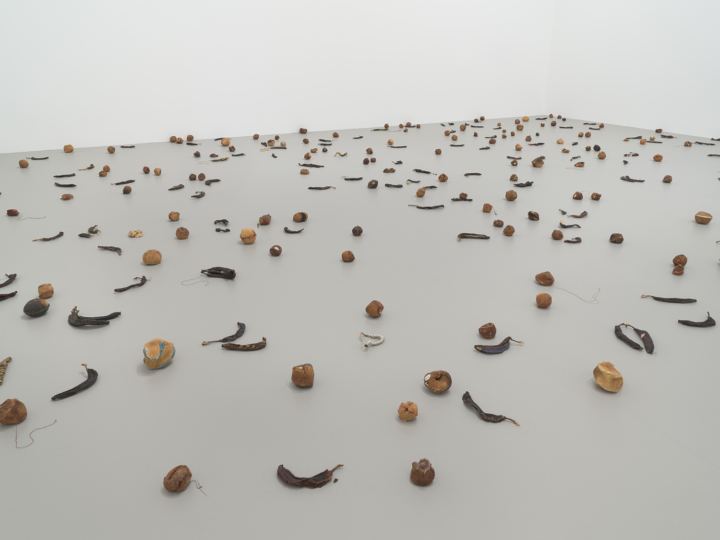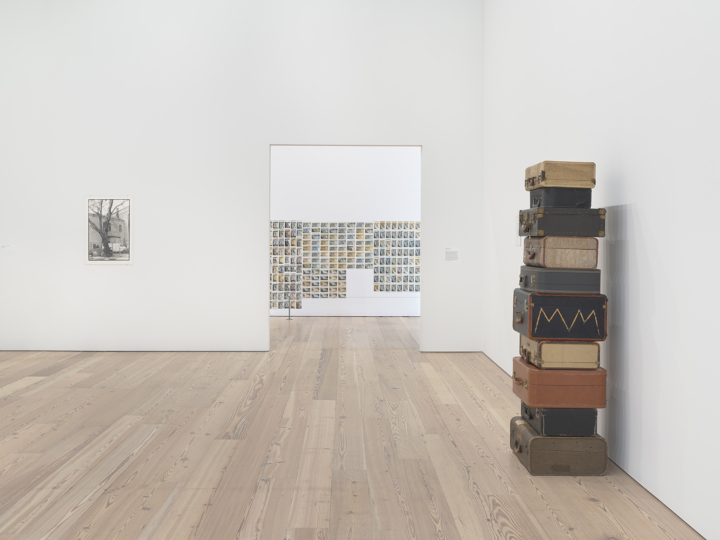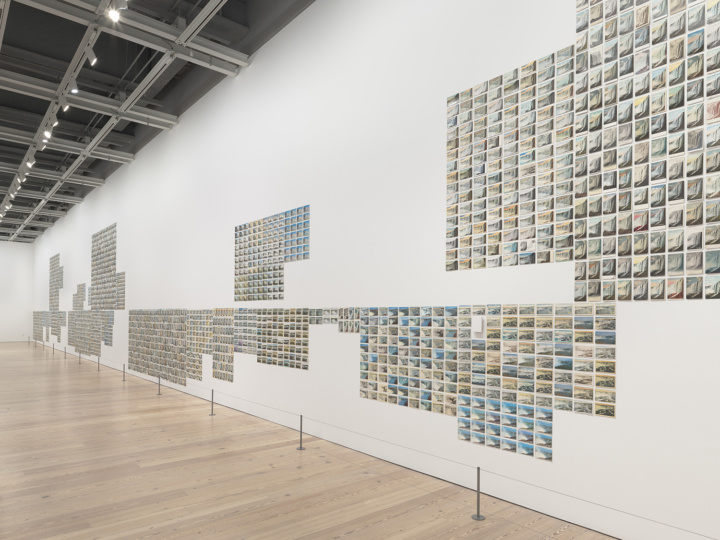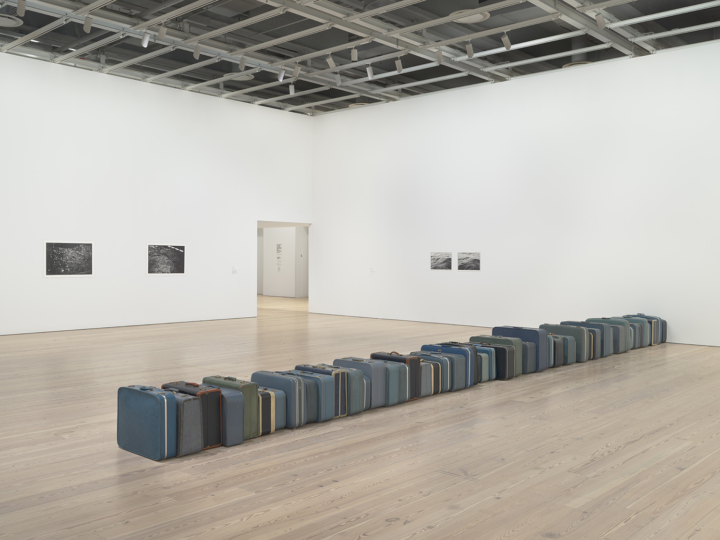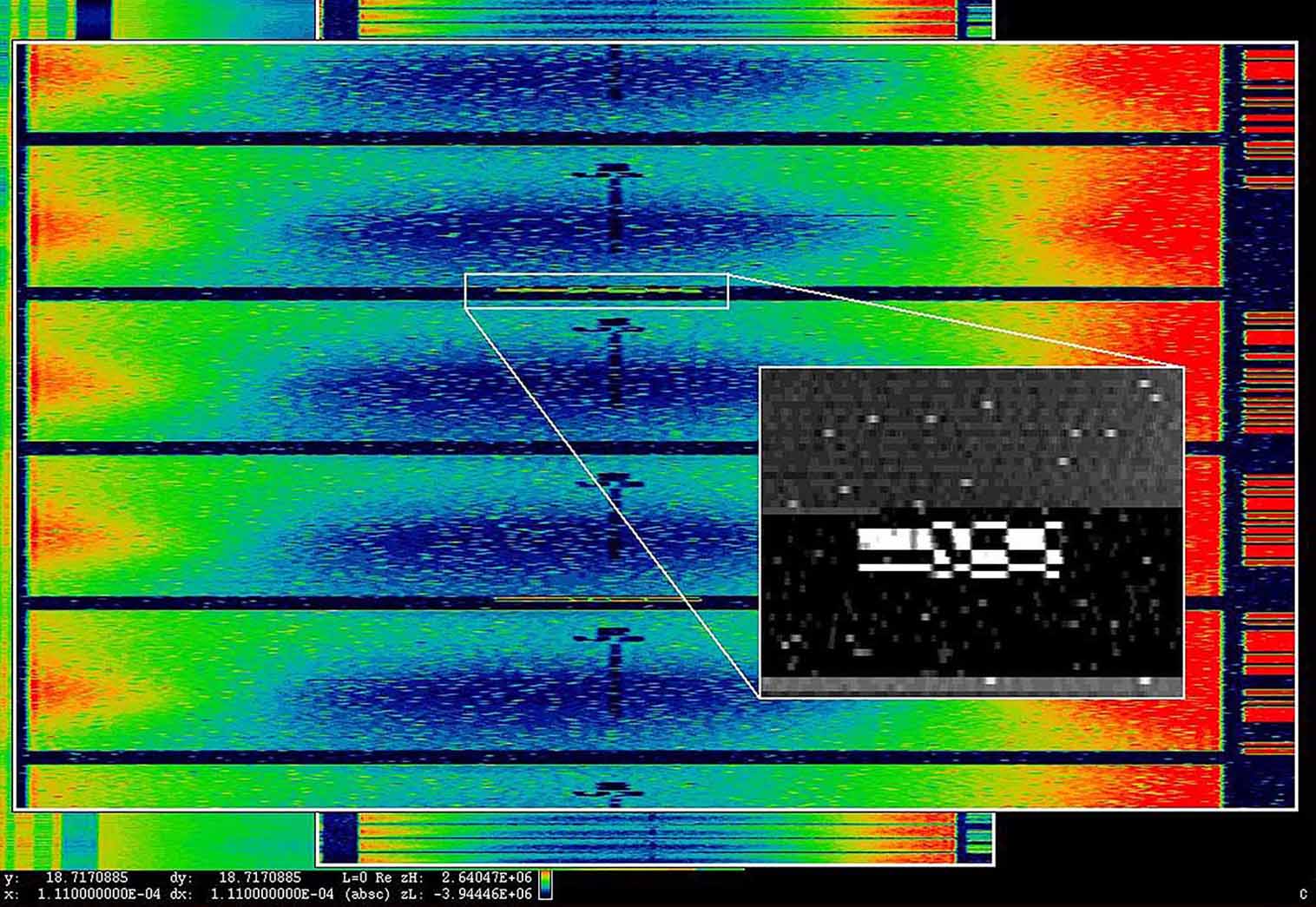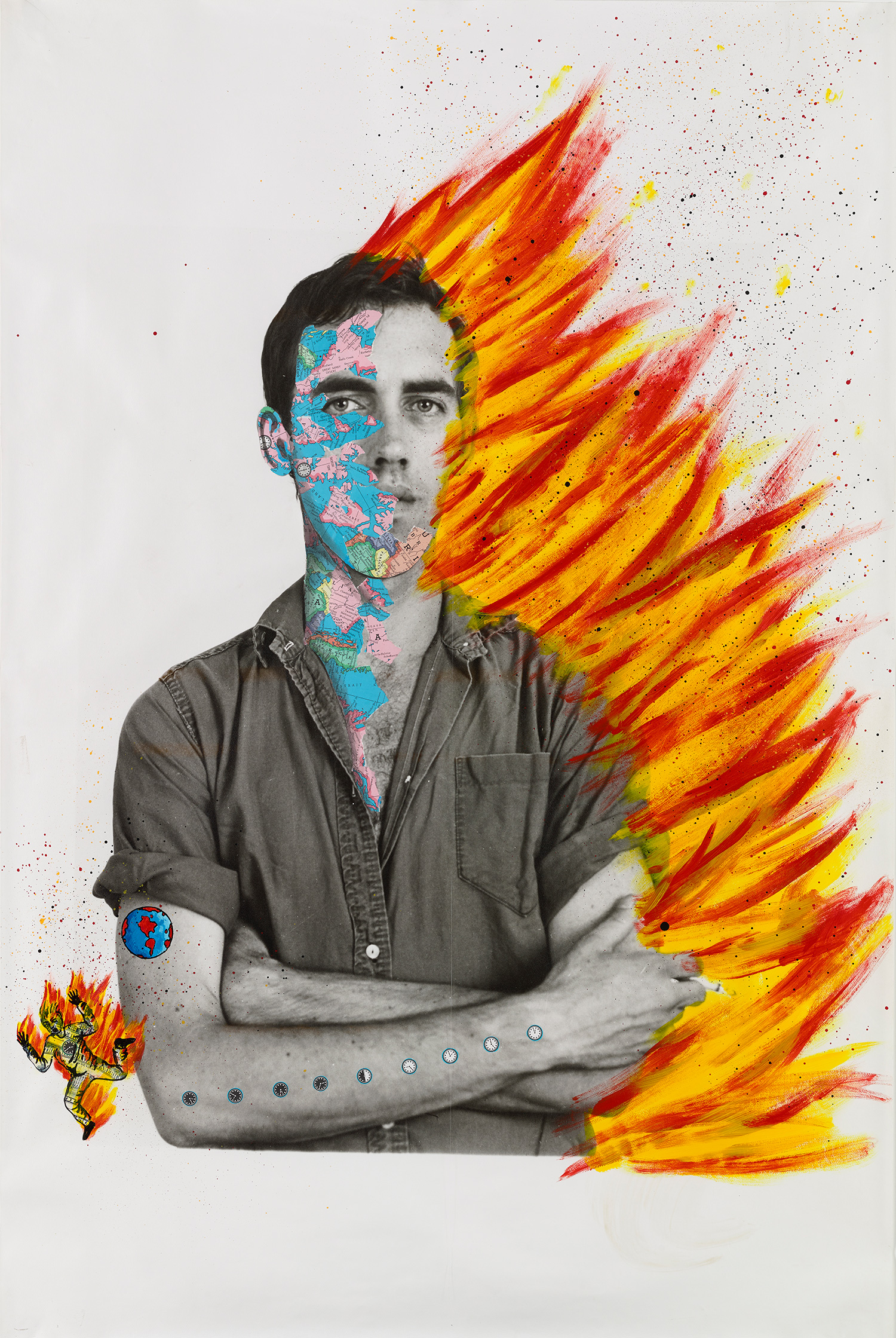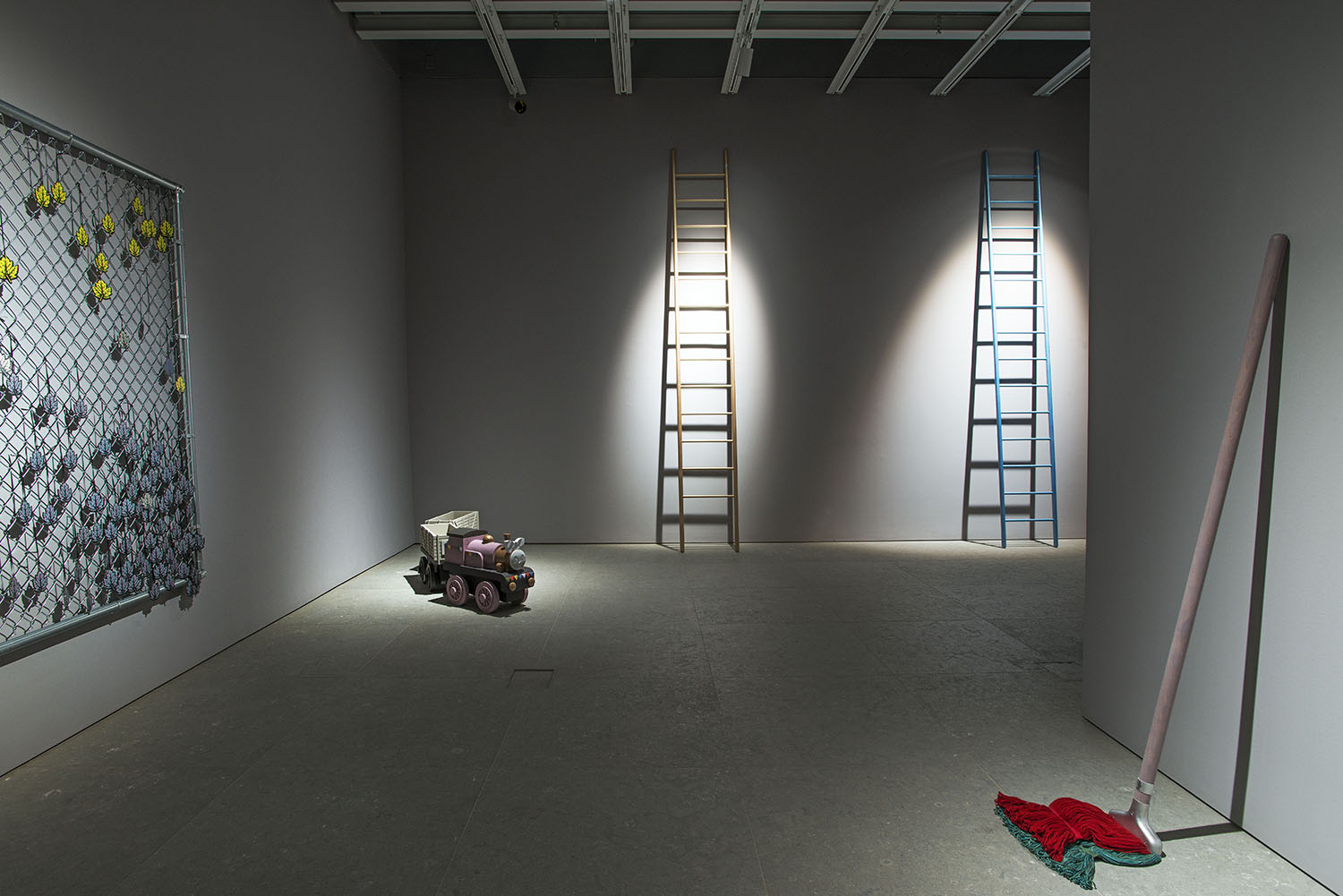“Zoe Leonard: Survey” at the Whitney Museum of American Art is the artist’s first retrospective in a major American museum. The first gallery exudes a longing for nostalgia and remote destinations. The walls display black-and-white photographs taken through a plane window. A queue of blue vintage suitcases, to which the artist keeps adding every year, sits on the floor in the middle of the gallery (1961, 2002).

The plain, vintage, dated look of the suitcases may be a metaphor for the lack of novelty that sightseeing offers, the ubiquitousness of our global consumer culture, which we never really abandon. Our dreams are mass marketed. The blue, contrasting with the dramatic black-and-white photos, suggests that color resides in the traveler, rather than the landscape: we carry our dreams hoping to see them manifest. Is that the definition of vacation? This installation is tied to the adjacent gallery’s You see I am here after all (2008), an impressive assemblage composed of about four thousand nearly identical vintage postcards of Niagara Falls. If a postcard is as an achievement (“Hello! I’ve been there!”), the overwhelming quantity here annihilates their naïve purpose: a trophy in a room full of trophies is no longer a trophy. But, as a whole, the assemblage is monumental, emulating the scale of the waterfalls. Human dreams pour into the ether like a colossal water chute. The installation Strange Fruit (1992–1997) presents a collection of fruit skins (banana, orange, lemon, and more) sewed together and decaying before our eyes. Unfortunately, the museum has provided little information about the piece. The Philadelphia Museum of Art’s description is more detailed: “‘Strange Fruit began as a means of consolation for the artist after the death of a friend [David Wojnarowicz] but now presents a wide range of possible readings, including a meditation on loss and mortality.” Here the longing for departure takes a much more tragic, fatal sense.

